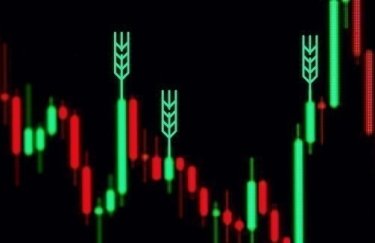- Дата публикации
Going public: the rating of the effective Ukraine public agricultural holdings

Due to the "ingenious" privatization of the 90s, we have no prerequisites for the formation of the stock market. But Ukrainian industrialists (including those with the prefix agro) are not discouraged. Our more civilized neighbors have the stock market. For example, Poland. The editors of "TOP-100. Ratings of the largest" have analyzed the effectiveness of Ukrainian agricultural companies that actively and successfully trade on the foreign exchanges.
Let's start with the bad news. According to the results of 2019, one of the largest egg producers in Ukraine, Ovostar Union, received $ 20 million in net loss compared to $ 17.5 million in net profit in 2018. Revenue decreased by 16%, to $ 104.7 million. EBITDA in 2019 was negative and amounted to $ 15.5 million against a positive $ 21.9 million in 2018.
According to the company"s report, the main factors behind the decrease were the increase in operating expenses, including the write-off of property and equipment destroyed in two fires that occurred at the Vasilkovsky production site in the summer of 2019, and the negative change in the value of biological assets.
Подписывайтесь на Telegram-канал delo.uaAgroGeneration, a French group with assets in Ukraine, got EUR 27.65 million in net loss in 2019, which is 2.6 times more than in 2018. Revenues fell by 25.4%, to 30.59 million euros, including revenues in Ukraine fell by 31%, to 15.86 million euros. In 2019, the company began a reorganization in order to optimize production. Unfavorable weather conditions over the past three years have forced the agronomic department to review the crop structure and reduce the number of legumes grown. In 2020, AgroGeneration received insurance compensation for a decrease in sunflower yields below the insurance level due to drought.
But there is also good news. The positive newsmaker was KSG Agro. According to the results of 2019, the agricultural holding increased profit 13 times: from $ 0.5 million in 2018 to $ 6.2 million in 2019. In addition, the company for the first time since 2014 reached a positive working capital of $ 13.4 million, which is almost twice as much as last year. At the same time, the agricultural holding's EBITDA grew 3.4 times, to $ 9.57 million (from $ 2.85 million in 2018). At the end of 2019, the total volume of credit debt decreased by almost 65% and amounted to $ 28.6 million.
Kernel also generates good news. In 2019, the company's revenue in the agricultural segment increased by 28%, to $ 470 million, and EBITDA doubled, to $ 182 million. In the 2019 marketing year, the agribusiness division of the company received the highest yield of major crops for the entire period of the company's activity — 3.3 million tons. EBITDA per hectare doubled, to $ 344. In general, Kernel's EBITDA for the marketing year 2019 increased by 55% to $ 346 million. The company is confident that as soon as the price of sunflower oil begins its exponential growth, Kernel"s income and profitability will increase significantly. The company plans to have an EBITDA of $ 500 million until 2021.
How we analyzed the data:
|
Debt ratio (weight factor — 40%) Net Debt / EBITDA The indicator of the debt burden on the company, its ability to pay off obligations (solvency). |
|
EBITDA margin (weight factor — 15%) EBITDA / revenue The coefficient reflects the profitability (loss-making) of the company before interest, taxes and depreciation. |
|
Return on equity (weight factor — 15%) Net Profit / Equity Indicator of the effectiveness of invested own funds. |
|
Return on assets (weight factor — 15%) Operating profit (EBIT) / total asset value An indicator of the effectiveness of the use of company assets for profit. |
|
Return on sales (weight factor — 15%) Net Profit / Revenues The ratio of net profit (after payment of all taxes and interest) of the company to revenue. The coefficient reflects the effectiveness of the company and shows how much money from the proceeds from the sale is profit. |



